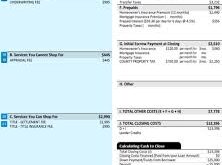Mortgage Principal Definition: Everything You Need to Know. The mortgage principal is the original amount borrowed from a lender to purchase a home, excluding interest and other fees. It represents the core of your loan balance, which decreases as you make payments over time. Understanding how mortgage principal works can help homeowners manage their loans effectively and save money on interest payments.
How Mortgage Principal Works
When you take out a mortgage, your loan consists of principal and interest. The principal is the actual amount you borrowed, while the interest is the cost charged by the lender for lending the money. Your monthly mortgage payment typically includes:
- Principal: A portion of the loan amount.
- Interest: The fee charged by the lender.
- Property taxes: Paid to local government.
- Homeowners insurance: Protects against property damage.
- Private mortgage insurance (PMI) (if applicable): Required for loans with a low down payment.
How Mortgage Principal Affects Your Loan
1. Monthly Payments
In the early years of a mortgage, most of your payment goes toward interest, while only a small portion reduces the principal. Over time, as the balance decreases, more of your payment applies to the principal.
2. Loan Term
Shorter loan terms (e.g., 15 years) result in higher monthly payments but allow homeowners to pay off the principal faster, reducing the total interest paid.
3. Interest Savings
The lower your mortgage principal, the less interest you will pay over the life of the loan. Making additional payments toward the principal can reduce your overall interest cost.
How to Reduce Your Mortgage Principal Faster
Reducing your mortgage principal faster can save you thousands of dollars in interest. Here are some strategies:
- Make extra payments – Paying more than the minimum required amount reduces the principal faster.
- Switch to biweekly payments – Instead of monthly payments, paying half your mortgage every two weeks results in one extra payment per year.
- Apply bonuses or tax refunds – Lump-sum payments can significantly reduce the loan balance.
- Refinance to a shorter loan term – A 15-year mortgage reduces principal faster than a 30-year loan.
- Round up your payments – Even rounding up to the nearest hundred dollars can help pay off principal faster.
The Relationship Between Mortgage Principal and Equity
As you pay down your mortgage principal, you build equity in your home. Equity is the difference between your home’s market value and the amount you owe on your mortgage. The more principal you pay, the more ownership you gain.
10 Tips for Managing Your Mortgage Principal
- Make extra payments when possible to reduce interest costs.
- Set up biweekly payments to shorten the loan term.
- Avoid interest-only loans, as they don’t reduce principal.
- Use windfalls like bonuses or tax refunds for lump-sum payments.
- Refinance to a lower interest rate to reduce principal faster.
- Consider a shorter loan term for significant long-term savings.
- Check with your lender to ensure extra payments apply to the principal.
- Avoid excessive home equity loans that increase your principal balance.
- Monitor your amortization schedule to track your principal payments.
- Stay consistent with payments to avoid loan term extensions.
10 FAQs About Mortgage Principal
1. What is the difference between mortgage principal and interest? The principal is the loan amount borrowed, while interest is the cost of borrowing.
2. Can I reduce my mortgage principal early? Yes, making extra payments or refinancing can help reduce the principal.
3. How does my mortgage principal affect my home equity? As you pay down the principal, your home equity increases.
4. Should I pay extra toward the principal or interest? Paying extra toward the principal reduces the overall interest cost.
5. What happens if I only make the minimum mortgage payment? You’ll pay more in interest over time and take longer to pay off the loan.
6. Does refinancing lower my mortgage principal? No, but it can lower your interest rate and help you pay down the principal faster.
7. How can I check my remaining mortgage principal? Your loan statement or lender’s website will show your remaining balance.
8. Can I use a home equity loan to pay off my mortgage principal? Yes, but this shifts debt rather than reducing it.
9. Will making extra payments lower my monthly mortgage payment? No, but it reduces the total interest paid and shortens the loan term.
10. What is an amortization schedule? It’s a table showing how each payment affects the principal and interest over time.
Conclusion
Understanding the mortgage principal definition and how it works is crucial for managing home loans effectively. The principal is the core amount borrowed, and paying it down efficiently can save thousands in interest. Homeowners can accelerate their loan payoff by making extra payments, refinancing, or switching to biweekly payments.
By focusing on principal reduction strategies, borrowers can build home equity faster and achieve financial freedom sooner. Taking control of your mortgage principal is one of the best financial decisions for long-term homeownership stability.
 mortgage.kbk.news
mortgage.kbk.news
